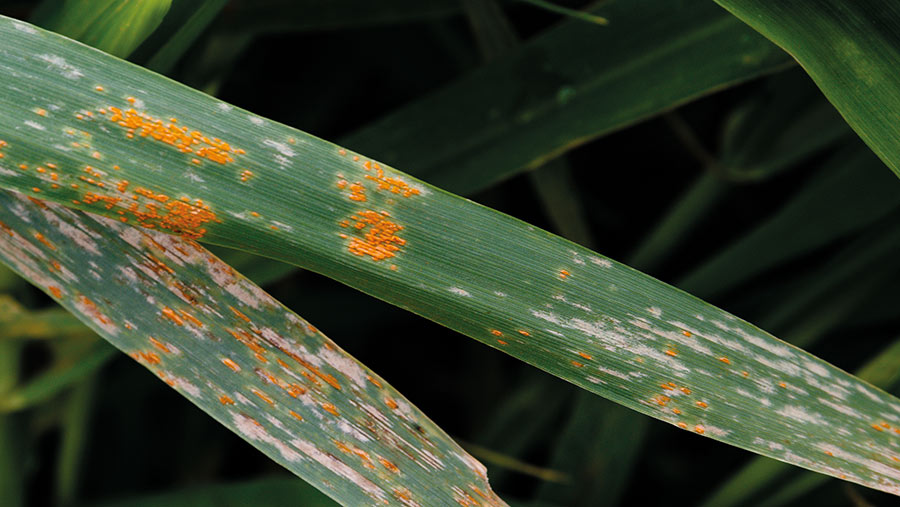Winter oats facing high disease could benefit from T0 spray
 © Blackthorn Arable
© Blackthorn Arable Winter oat growers could benefit from an earlier spring fungicide than usual as crops face a higher disease pressure, following a relatively mild winter.
Mildew, crown rust and septoria have all been identified in oat crops considerably earlier than usual across the key growing regions such as the south-west of England, prompting the requirement of an additional T0 spray.
Typically, winter oat crops receive two fungicides, with the first T1 spray going on at GS32 to target mildew and crown rust, while the T2 spray is applied between GS55-59 for crown rust control.
See also: Why mixed farmer exited pigs to focus on agroecology cropping
Extra T0 spray
Hutchinson’s technical development director David Ellerton explains that most crops are still some way off the GS32 timing, which usually falls around early May depending on the season.
“Consideration should be given to applying an early T0 fungicide to crops now prior to the traditional T1 timing, particularly where mildew or crown rust is present,” says Dr Ellerton.
He continues that fungicide strategies should consider the varietal risk for crown rust and mildew, as many leading varieties have relatively low genetic resistance.
“For example, Lineout with a rating of 3, and Dalguise, Grafton, Gerald, Fusion and Southwark with a rating of 4, are all at high risk of mildew infection. For crown rust, Fusion has a rating of 3 and Gerald, Grafton and Dalguise have a rating of 4.”
Active choice
In terms of the most appropriate actives for controlling mildew, Dr Ellerton recommends basing the T0 on proquinazid, which offers a high level of protectant activity, or cyflufenamid if there is established infection to control.
However, if cyflufenamid is applied at T0, it cannot be used in the subsequent fungicide application, he points out.
Prothioconazole + tebuconazole, or benzovindiflupyr, also offer some mildew control, while for crown rust, he suggests a tebuconazole-based product at T0 prior to the T1 should the disease develop strongly.
Once crops reach T1, he says the newly approved combination of benzovindiflupyr + prothioconazole, or tebuconazole + prothioconazole all give good levels of crown rust knockdown.
Greater persistence can be achieved by including strobilurins such as azoxystrobin , pyraclostrobin or fluoxastrobin in co-formulation with prothioconazole.
“Fluxapyroxad will also give good crown rust control, although it should always be applied in mix with a suitable triazole to reduce resistance development.”
Growing septoria threat
Alongside the traditional threats from mildew and crown rust, Dr Ellerton urges growers and agronomists to look out for septoria leaf blotch, which has also been idenitified in crops and appears to be an increasing issue in UK oats.
Symptoms range from dark-brown or purplish spots, to larger spreading light brown lesions with yellow margins. Brownish-black pycnidia can be seen with a hand lens, sunken in the tissue of larger lesions.
Although, there is little information from manufacturers on which products offer the optimum efficacy against Septoria leaf blotch in oats, Dr Ellerton recommends controlling the disease using fluxapyroxad in combination with triazoles such as mefentrifluconazole. Folpet however, does not have clearance for use in oats.
